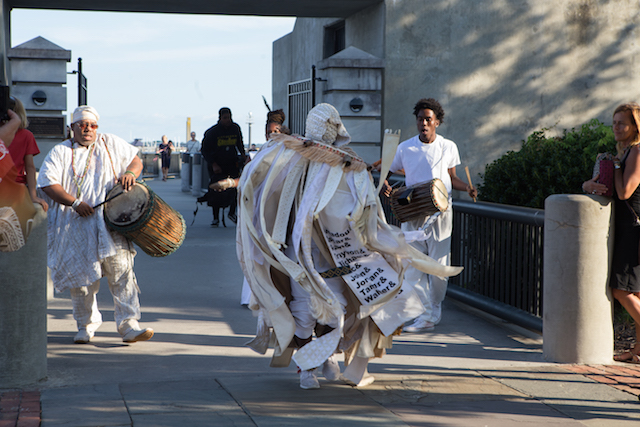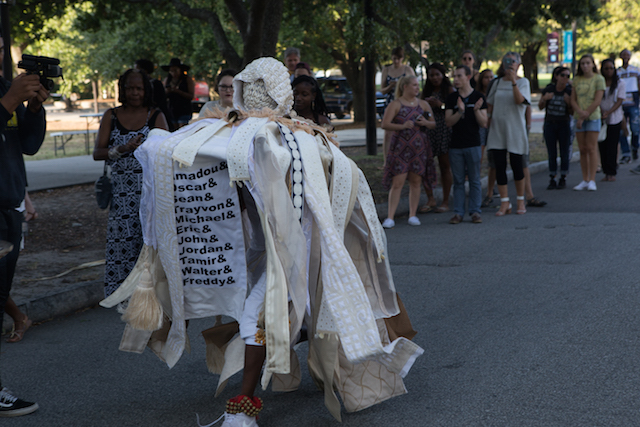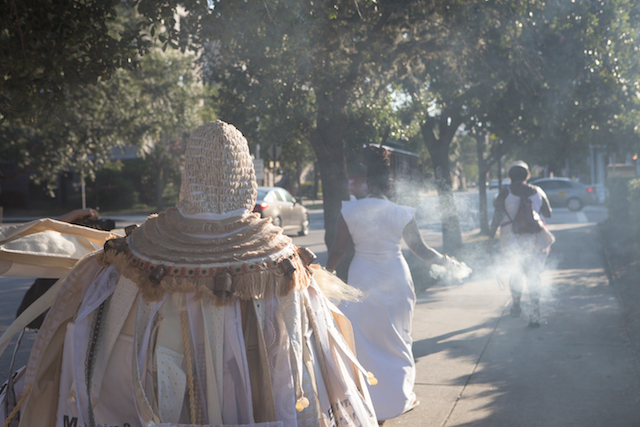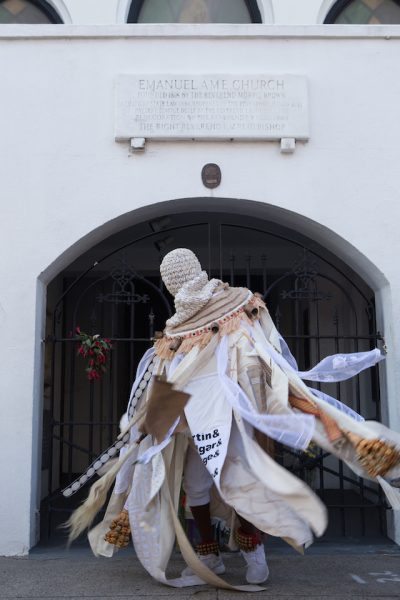



Photo: Jess Spence
After the shooting of Walter Scott in North Charleston made headlines in April 2015, Mark Sloan, Director and Chief Curator of the Halsey Institute of Contemporary Arts sent the newspaper cover to Atlanta-based artist Fahamu Pecou with a note: “We’re ready for you.” Walter Scott and the other Black Americans persecuted by the police is not a new phenomenon. To use the artist Fahamu Pecou’s words, the spectacle of Black death that has risen to the surface is a result of multiple forms of disguised terrorism and racism since the birth of the country. Unfortunately, the dialogue over such persecution has still remained hushed. In large part, it is a fear of change and discomfort amongst Americans that presents open discourse, especially within the art world. Pecou is one of several artists who are working to start a dialogue and overcome those fears.
Pecou initially produced work that exploited the mass media and culture of spectacle by adopting a persona called “Fahamu Pecou is the Shit.” He used himself as a tool in his artwork, which was vibrant and equally spectacular to match the nature of our media culture. After being contacted by the Halsey Institute, however, Pecou began to work on a completely new body of work that encouraged him to push his artistic boundaries. The collection presented in the DO or DIE exhibition is provocative but in a much less invasive manner; the gestural drawings, gold-leafed large-scale paintings and elusive dancing projected into water are simply beautiful.

Photo: Jess Spence
Pecou began working on a body of work with the desire to heal a space, that space being the city of Charleston and the suffering that has occurred on the peninsula. Thus, his first piece was the “New” World Egungun costume. In Yoruba culture, the Egungun serves as a central figure in the ritual to both memorialize ancestors and call upon their wisdom and blessings. Death is not an eternal end in the Yoruba culture that informs Pecou’s work, and it is understood that our ancestors and God are omnipresent in our daily lives. Pecou used the Yoruba ritual as a model for a procession to mark the beginning of the exhibition. He led the procession as the anonymous Egun as a way to heal the historical suffering that has occurred on Calhoun Street and Charleston as a whole. We marched past Gadsden’s Wharf, a major port for the slave trade. We marched past the site for the new International African American Museum. We marched past the Mother Emanuel AME church where nine black citizens were massacred in June 2015. Finally, we marched into the Halsey Institute and welcomed the space with the compassion of the people of Charleston.

Photo: Jess Spence
The procession is just the beginning of Fahamu’s time in Charleston. The Halsey Institute has arranged a discussion series to bring school students into the gallery to experience the art first-hand. He’s also coordinated an Intersession event with Killer Mike and Dr. Arturo Lindsay, called Intersessions: The Art X Hip Hop Dialogues™ , to share a conversation with the greater public. However, the efforts made by Pecou cannot be the lone driving force for change in our community and need a reciprocated interest from us all. Even if you do not come see the exhibit, I encourage you to keep an open mind, be curious and remember to try and see the world from someone else’s perspective every so often.

Photo: Jess Spence
By Jess Spence, Halsey Institute intern